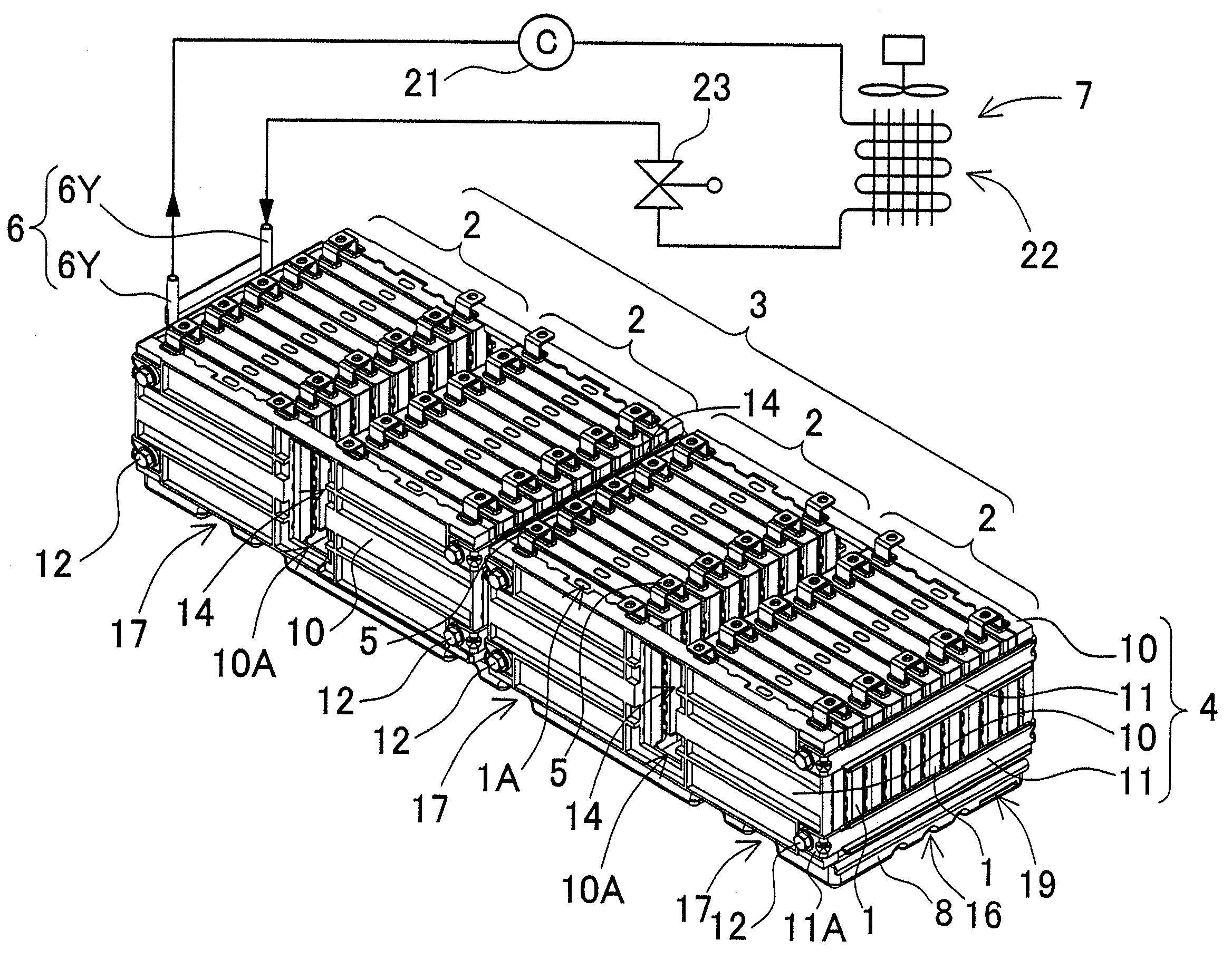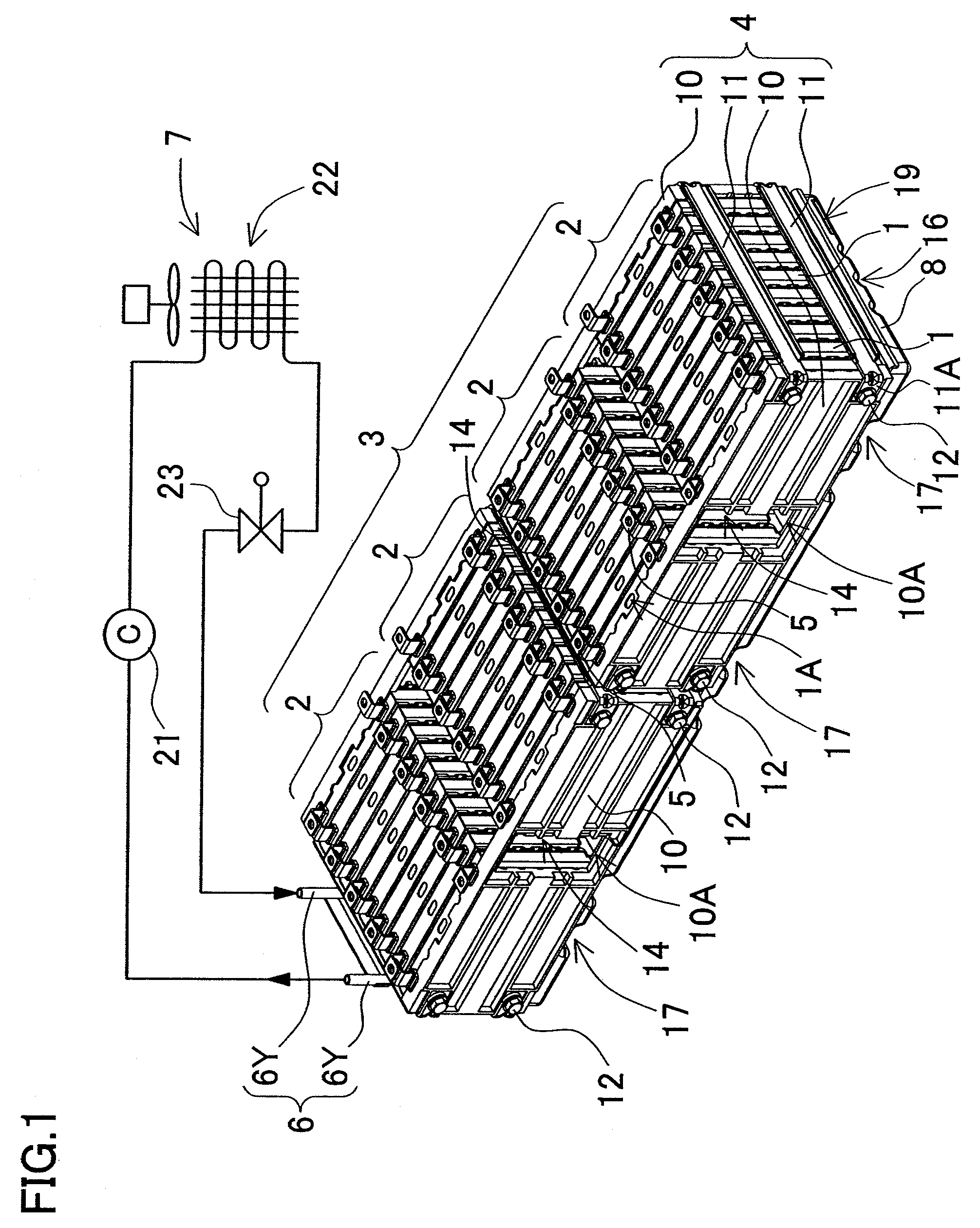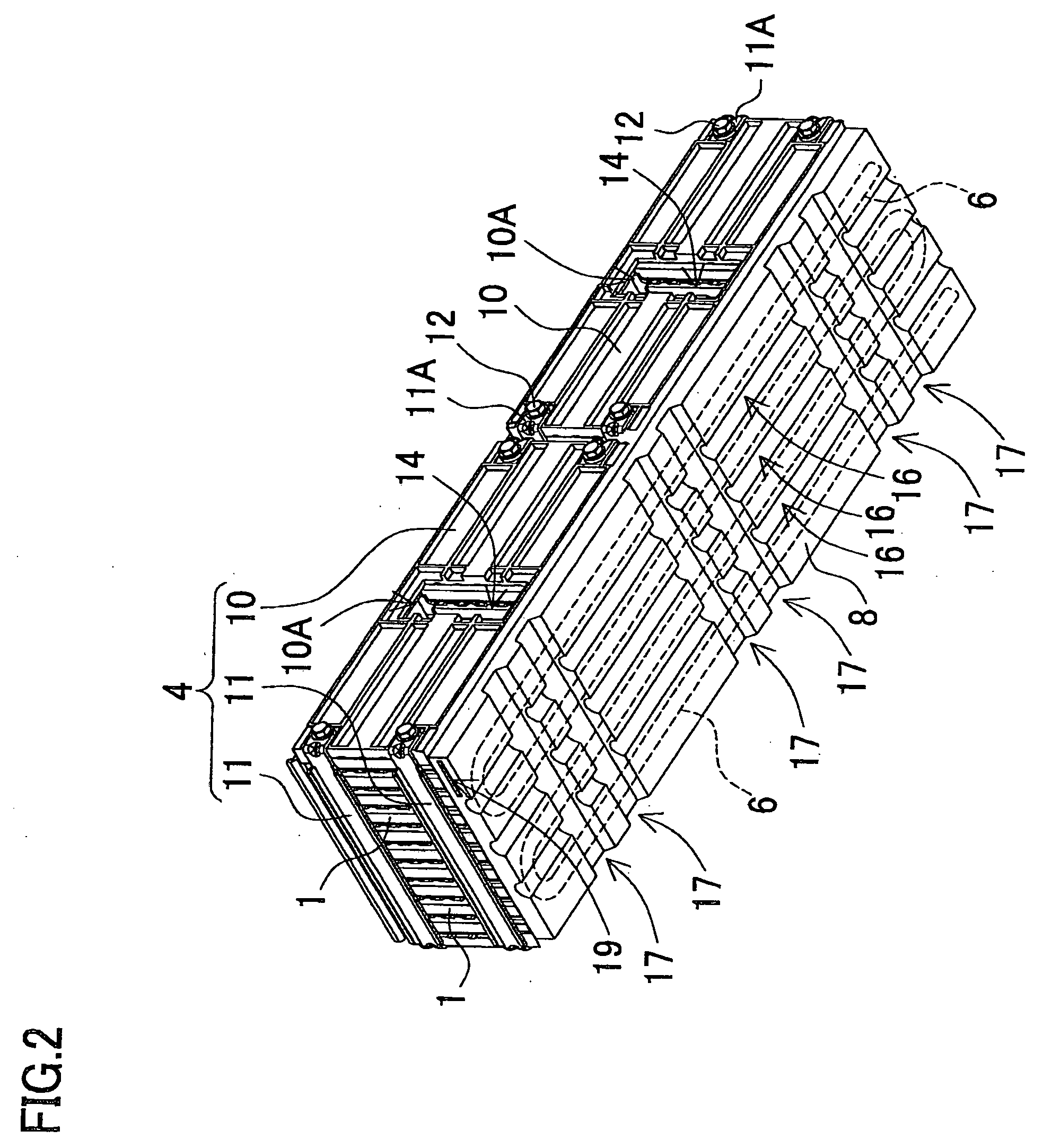Battery system cooled via coolant
a battery system and coolant technology, applied in the field of battery systems, can solve the problems of increased noise, additional drawbacks, and difficulty in rapid air-cooling batteries generating considerable amounts of hea
- Summary
- Abstract
- Description
- Claims
- Application Information
AI Technical Summary
Benefits of technology
Problems solved by technology
Method used
Image
Examples
Embodiment Construction
[0026]FIGS. 1-6 show a first embodiment and FIGS. 7 and 8 show a second embodiment of the present invention. The battery system shown in these figures is most suitable as a power source primarily for an electrically powered vehicle such as a hybrid car, which is driven by both an engine and an electric motor, or an electric automobile, which is driven by only an electric motor. However, the present invention can be used in vehicles other than a hybrid car or electric automobile, and it can also be used in applications that require large output other than electrically powered vehicles.
[0027]The battery systems of the following embodiments are provided with a battery block 3, 33 having a plurality of rectangular batteries 1, 31 that are wider than they are thick connected in a stacked configuration by a battery holder 4, 34; a cooling plate 8, 38 disposed in thermal contact with the bottom surface of the battery block 3, 33 and having a hollow region 18, 48 inside; cooling pipe 6, 36 ...
PUM
| Property | Measurement | Unit |
|---|---|---|
| shape | aaaaa | aaaaa |
| electrically insulated | aaaaa | aaaaa |
| output voltages | aaaaa | aaaaa |
Abstract
Description
Claims
Application Information
 Login to View More
Login to View More - R&D
- Intellectual Property
- Life Sciences
- Materials
- Tech Scout
- Unparalleled Data Quality
- Higher Quality Content
- 60% Fewer Hallucinations
Browse by: Latest US Patents, China's latest patents, Technical Efficacy Thesaurus, Application Domain, Technology Topic, Popular Technical Reports.
© 2025 PatSnap. All rights reserved.Legal|Privacy policy|Modern Slavery Act Transparency Statement|Sitemap|About US| Contact US: help@patsnap.com



